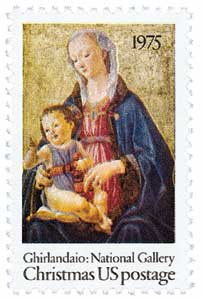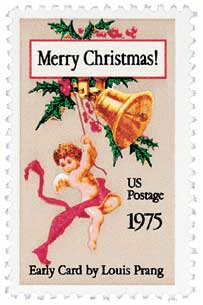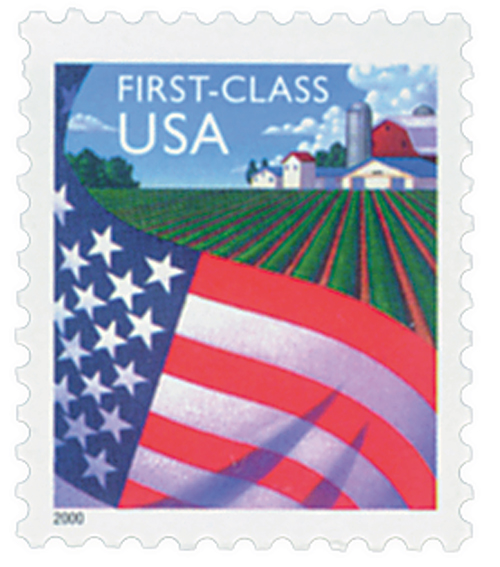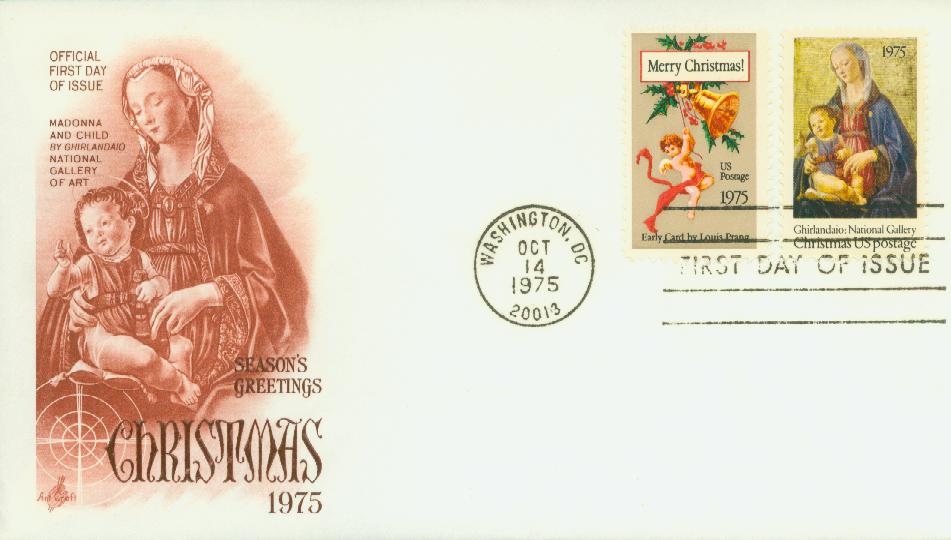
Traditional Christmas
Traditional Christmas
Perforation: 11
First Non-Denominated US Stamps

On October 14, 1975, the USPS issued its first non-denominated postage stamps. The two Christmas stamps were issued without denominations because the USPS was unsure about an upcoming rate change.
Over the years, postal costs increased, and the USPS had to raise rates for the different classes of mail. However, before these rates could officially go into effect, they had to be submitted to the Postal Rate Commission. This commission could take up to a year collecting data and studies before deciding whether or not to allow the rate changes. In times when the rate increase was approved, the USPS would then have to rush new stamps into production. This was a process that would normally take months or even more than a year, so the USPS sought a way to get around the issue.

By late 1975, the USPS knew a new postage rate was coming, but not when it would go into effect. Since the 1960s, they had been issuing Christmas stamps in October and November, so mailers had time to get their festive stamps in time to frank their holiday cards. The USPS couldn’t wait too long to issue its Christmas stamps, so they decided to issue them on October 14 without denominations. Also known as “no value indicated” (NVI), these stamps were simply labeled “US Postage.” America’s first non-denominated postage stamps, they would be valid for whatever postage rate was in effect at that time. As it turned out, the rate increase to 13¢ didn’t come until December 31, 1975, so both stamps were valued at 10¢.
The Traditional Christmas stamp pictured a detail of The Madonna and Child, painted by Italian artist Domenico di Tommaso Ghirlandaio. The Contemporary Christmas stamp shows one of the earliest Christmas cards printed in the United States. The original card, printed in 1878, included the words, “Ring the joybells –ring, Christ is born – our King.” However, this wording was omitted on this non-religious Christmas issue.

After the rate change troubles of 1975, the USPS decided it could get ahead of the problem but printing non-denominated stamps in advance, so they would be ready for any new rate changes. A letter of the alphabet was used to represent the unknown rate, so the stamps could meet customer demand until new stamps bearing the actual rate were printed. When the rate increased in 1978 from 13¢ to 15¢, the first letter rate change stamps, #1735, 1736, and 1743, were put into use.

The USPS continued to produce letter rate change stamps into the early 2000s. The A-D stamps pictured an eagle on different colored backgrounds with its corresponding letter. There were also “E” Earth stamps, “F” Flower stamps, “G” Old Glory stamps, and “H” Uncle Sam’s Hat stamps, among others. During this era, there were also non-denominated stamps issued for the bulk, non-profit, pre-sorted first class, pre-sorted standard, and pre-sorted first-class card rates.

Eventually, rate change stamps were labeled “First Class” in place of the alphabet stamps. This practice began with the Flag Over Farm stamps of 2000. Then a major change came in 2007 with the issue of America’s first Forever stamp. Customers would be able to purchase Forever stamps at the current first-class postage rate and use them anytime in the future, regardless of rate increases. For the first few years, the Liberty Bell was the only Forever stamp, but in 2011 the USPS began issuing all first-class stamps with the Forever designation. In 2013, they began producing Global Forever stamps for first-class international mail. And in 2015, the Forever concept was applied to postcard stamps, non-machinable surcharge stamps, and two and three ounce stamps.











